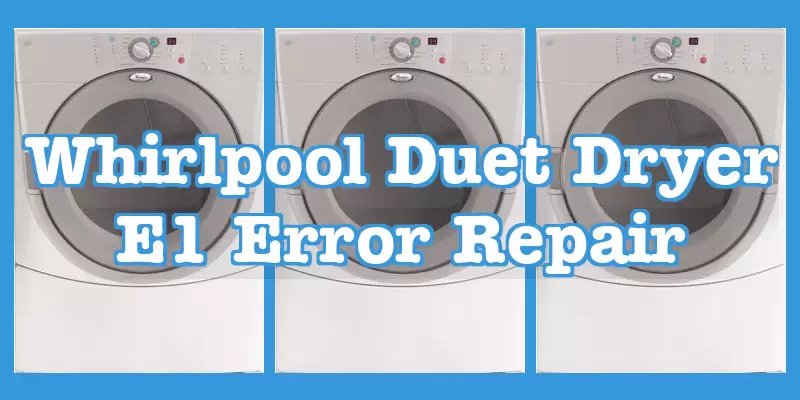
So what exactly does this E1 error mean, you ask? In simple terms, it’s a signal that the temperature in the dryer isn’t being regulated correctly. This usually happens when there’s a problem with the thermistor – a small sensor responsible for monitoring the temperature and ensuring your clothes come out just the way you want them: dry but not fried. Imagine relying on a broken thermostat in your living room – too hot or too cold, and you’re in for a bit of discomfort. Luckily, there are steps you can take to keep this error from crashing your laundry party in the future.
Understanding the Causes of the E1 Error Code
To effectively prevent the E1 error, it’s essential to understand its root causes. Most often, this error is triggered by a malfunctioning thermistor. Think of the thermistor as a diligent little guardian making sure the temperature inside your dryer is just right. If it gets faulty, it’s like removing the thermometer from your oven mid-cooking – you won’t know if things are heating up or cooling down. Various factors, like lint build-up or moisture, can affect the thermistor’s efficiency.
Another culprit could be wiring issues. Over time, the connections between the thermistor and the control board might suffer from wear and tear, leading to communication problems. Imagine trying to call a friend using a phone with a broken microphone – frustrating, right? That’s how your dryer feels when it can’t get accurate temperature readings. As a result, the control board might receive skewed data, causing the E1 error code to flash.
Sometimes, environmental factors such as high humidity or extreme temperatures can lead to this error. These conditions can interfere with the dryer’s ability to maintain optimal temperature settings. It’s like trying to stay cool with a fan in a scorching desert – not the most ideal situation. Regular checks and maintaining a consistent environment can go a long way in preventing these issues.
Steps to Prevent the E1 Error Code
Alright, here’s the deal: taking preventive steps can significantly reduce the chances of encountering the E1 error. Regular maintenance and vigilance are key here. Start by ensuring that the lint filter is clean before every use. Lint build-up is one of the sneaky culprits that can affect the airflow and, subsequently, the temperature regulation in your dryer. Think of it like a clogged nose – it’s hard to breathe and even harder to function normally. Similarly, a clogged lint trap can wreak havoc.
Furthermore, keep an eye on the dryer’s location and surroundings. Ensure that air circulation isn’t obstructed by objects placed around it. Imagine trying to exercise in a crowded room – not very effective or comfortable, right? Your dryer feels the same when it doesn’t have enough space to breathe. Maintaining a cool, dry, and clean environment around the dryer helps preserve its components and prevents sensor errors.
Lastly, it’s wise to schedule regular inspections with a qualified technician. Even if everything seems fine on the surface, a professional can spot potential issues before they escalate. It’s like a routine health check-up – catching a problem early can save you a world of trouble down the line. They can check for faulty wiring or potential thermistor issues, providing peace of mind and uninterrupted dryer performance.
What to Do If the E1 Error Persists
But what if the E1 error still sneaks up on you despite all precautions? First, don’t panic! There are still measures to address and resolve it. Start by turning off your dryer and unplugging it from the power source. Giving it a little break might help reset its system. It’s akin to rebooting your computer when it starts acting up – simple yet surprisingly effective.
Next, inspect the lint filter and the surrounding areas for any blockages. If the thermistor is easily accessible, you could gently clean it using a soft brush to remove dust and debris. Just be cautious not to damage it in the process. If you’re unsure, it might be best to leave it to a professional. Remember, it’s better to be safe than sorry when dealing with electrical appliances.
If you’ve tried these steps and the error persists, calling in a professional technician is your best bet. They possess the expertise to diagnose and fix issues that might not be visible to the untrained eye. Even if it seems daunting, addressing the problem promptly can prevent further damage and ensure your dryer continues to serve you well.
In conclusion, preventing the Whirlpool dryer E1 error code requires a bit of attention to detail and regular maintenance. By understanding the causes and taking proactive steps, you can ensure your dryer remains a reliable part of your household. Think of it as nurturing a plant – with the right care, both will flourish and function beautifully. Enjoy peace of mind knowing that with these simple tips, you’re set to prevent future hiccups and keep your laundry routine rolling without a hitch.